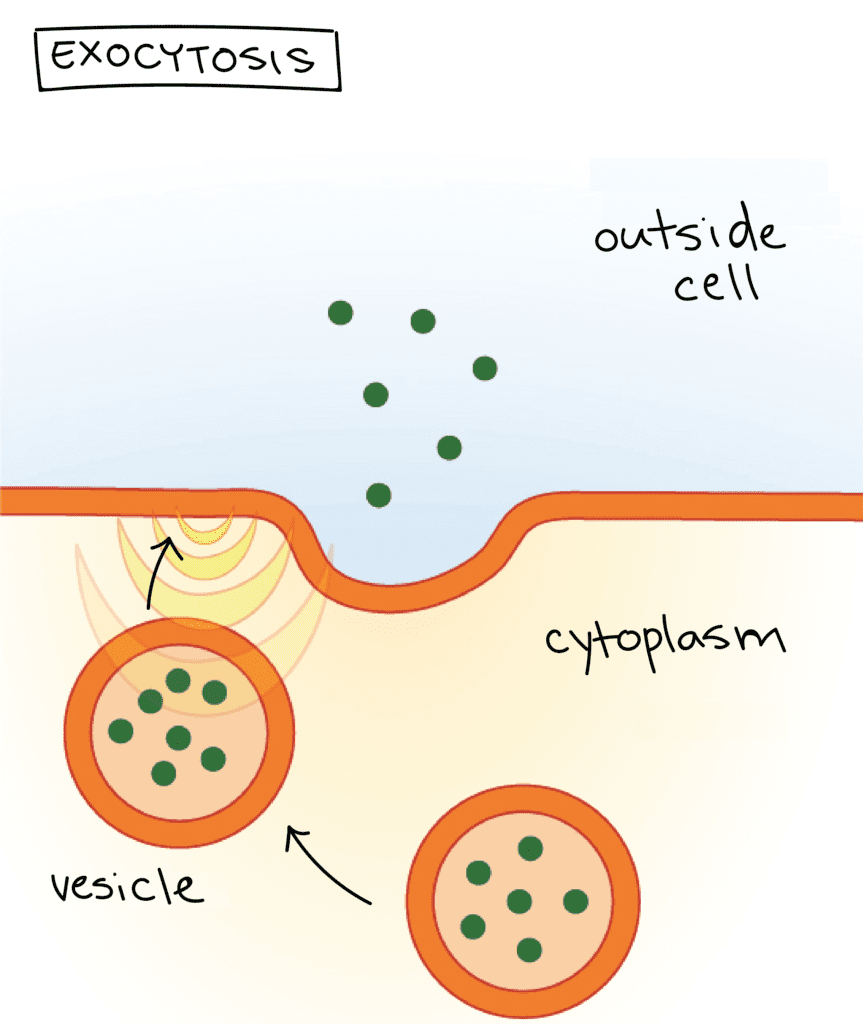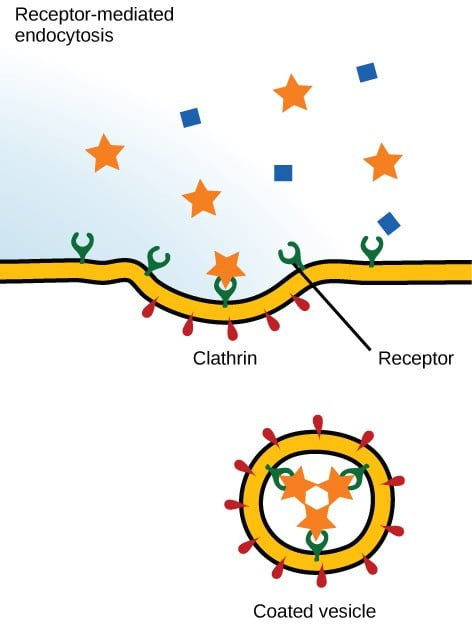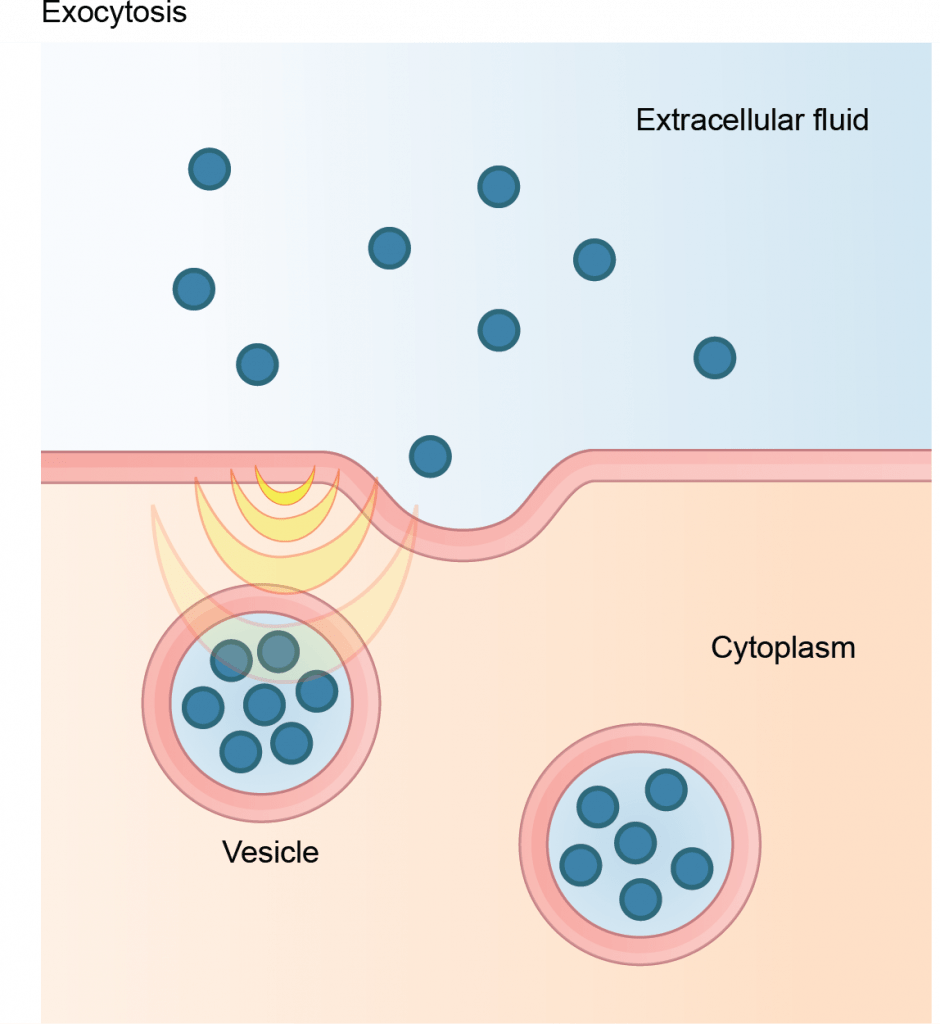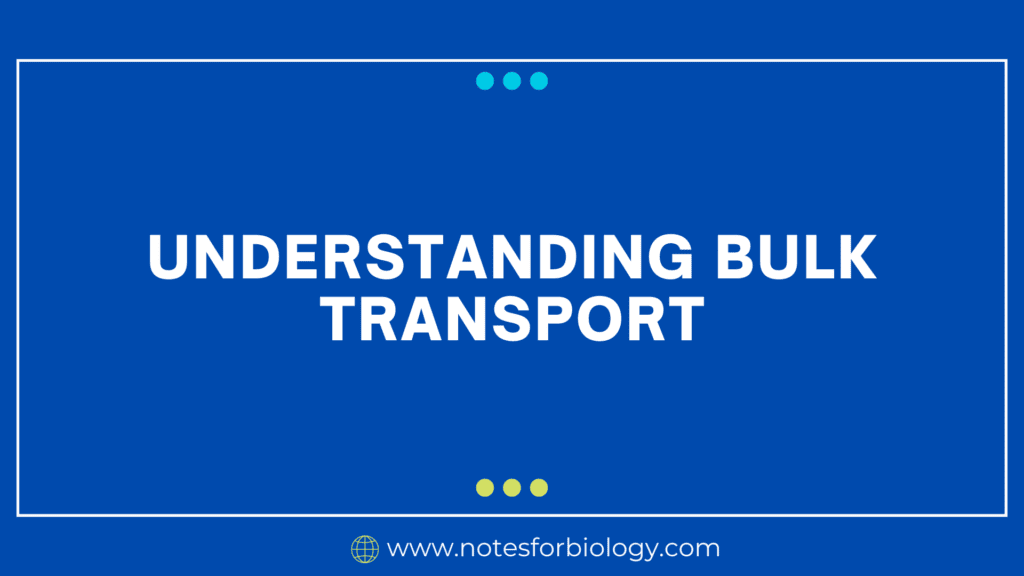Bulk transport is the term used to describe the passage of big molecules or particles through the endocytosis and exocytosis processes across the cell membrane. Larger complexes including proteins, polysaccharides, and big particles are intended to be transported via bulk transport as opposed to simple diffusion or active transport, which entail the movement of small molecules or ions.
Table of Contents
Principle of Bulk Transport
Bulk transport operates on the principle of vesicular trafficking, where substances are enclosed in vesicles (small membrane-bound sacs) that facilitate their movement into (endocytosis) or out of (exocytosis) the cell. This process requires energy in the form of ATP and involves the dynamic reorganization of the cytoskeleton and membrane components.

Process of Bulk Transport
1. Endocytosis:
Phagocytosis: Often called “cell eating,” this process entails stretching the cell membrane around big particles, such bacteria or detritus, to form a phagosome, which then absorbs the item. For digestion, the phagosome and lysosome then combine.
Pinocytosis: This process, sometimes referred to as “cell drinking,” is the absorption of extracellular fluid and the dissolved solutes it contains by means of the development of tiny vesicles. This procedure is not particular.
Receptor-Mediated Endocytosis: A vesicle that internalizes the receptor-ligand complex is formed when extracellular molecules, or ligands, attach to particular receptors on the cell membrane. This is a very specific process. Cells may now import chemicals in high concentrations selectively because to this.

2. Exocytosis:
Constitutive Exocytosis: Proteins and lipids are regularly transported from the Golgi apparatus to the cell surface as part of this ongoing process. It is necessary to keep the extracellular matrix and cell membrane intact.
Regulated Exocytosis: Here, cells store vesicles holding certain chemicals (hormones, neurotransmitters, etc.) and release them in reaction to signals. In procedures like hormone secretion and neurotransmission, this is crucial.
Examples
- Immune response
Phagocytosis: Macrophages and neutrophils are important components of the immune response because they absorb and eliminate infections by phagocytosis. - Nutrient Uptake
Receptor-Mediated Endocytosis: Low-density lipoprotein (LDL) cholesterol is taken up by cells through receptors, guaranteeing the supply of cholesterol required for membrane formation and other processes. - Neurotransmitter Release
Regulated Exocytosis: In response to an action potential, neurons release neurotransmitters into the synaptic cleft via controlled exocytosis, which promotes neural transmission. - Hormone Secretion
Regulated Exocytosis: In reaction to blood glucose levels, endocrine cells produce hormones, such as insulin from pancreatic beta cells.
Application of Bulk Transport
- Drug Delivery
Comprehending bulk transport pathways can facilitate the development of drug delivery systems that leverage endocytosis to augment therapeutic agent uptake by target cells. - Gene Therapy
Utilizing receptor-mediated endocytosis, viral vectors are utilized in gene therapy to introduce genetic material into cells. - Nanotechnology
It is possible to create medically intended nanoparticles to enter cells by endocytosis, enabling targeted medication administration and diagnostics. - Biotechnology
Bulk transport techniques are used in methods such as liposome-mediated gene transfer to introduce nucleic acids into cells for genetic engineering and research.

Limitations
- Specificity:
While non-specific endocytosis, or pinocytosis, might result in the absorption of undesirable chemicals, receptor-mediated endocytosis provides specificity. - Energy Requirement:
Bulk transport is a high-energy mechanism that needs a lot of ATP to propel the creation and motion of vesicles. - Size Limitation:
The kinds and sizes of particles that can be moved by bulk transport systems are restricted. - Potential for Pathogen Exploitation:
Certain pathogens, like bacteria and viruses, can infiltrate and infect host cells by taking advantage of bulk transport systems.
Conclusion
Bulk transport, which includes processes like endocytosis and exocytosis, is an essential biological activity for transferring big molecules and particles across the cell membrane. It is essential for many physiological processes, such as the intake of nutrients, immunological reactions, and communication between cells. Bulk transport is an important field of research with important implications for cellular biology, biotechnology, and medicine despite its energy requirements and potential for pathogen exploitation. Further comprehension of these processes may result in improvements in gene therapy, medication delivery methods, and nanotechnology.
Frequently Asked Question(FAQ)
What is the bulk transport across the membrane?
The process of moving big amounts of materials and food particles across a membrane is known as bulk transport. It happens both externally and internally. With the aid of carrier molecules, it is accomplished.
What is the bulk mode of transport?
Water, inorganic ions, and (organic) molecules containing carbon make up cells. At least 70% of the mass of a cell is made up of water, making it the most prevalent molecule in cells.
Why is bulk transport important?
Nonetheless, bulk transport pathways exist in the majority of cells. These systems enable cells to release signaling molecules to interact with nearby cells, “grab” certain particles from the extracellular fluid, and absorb nutrients from the surrounding environment.
Related Article

